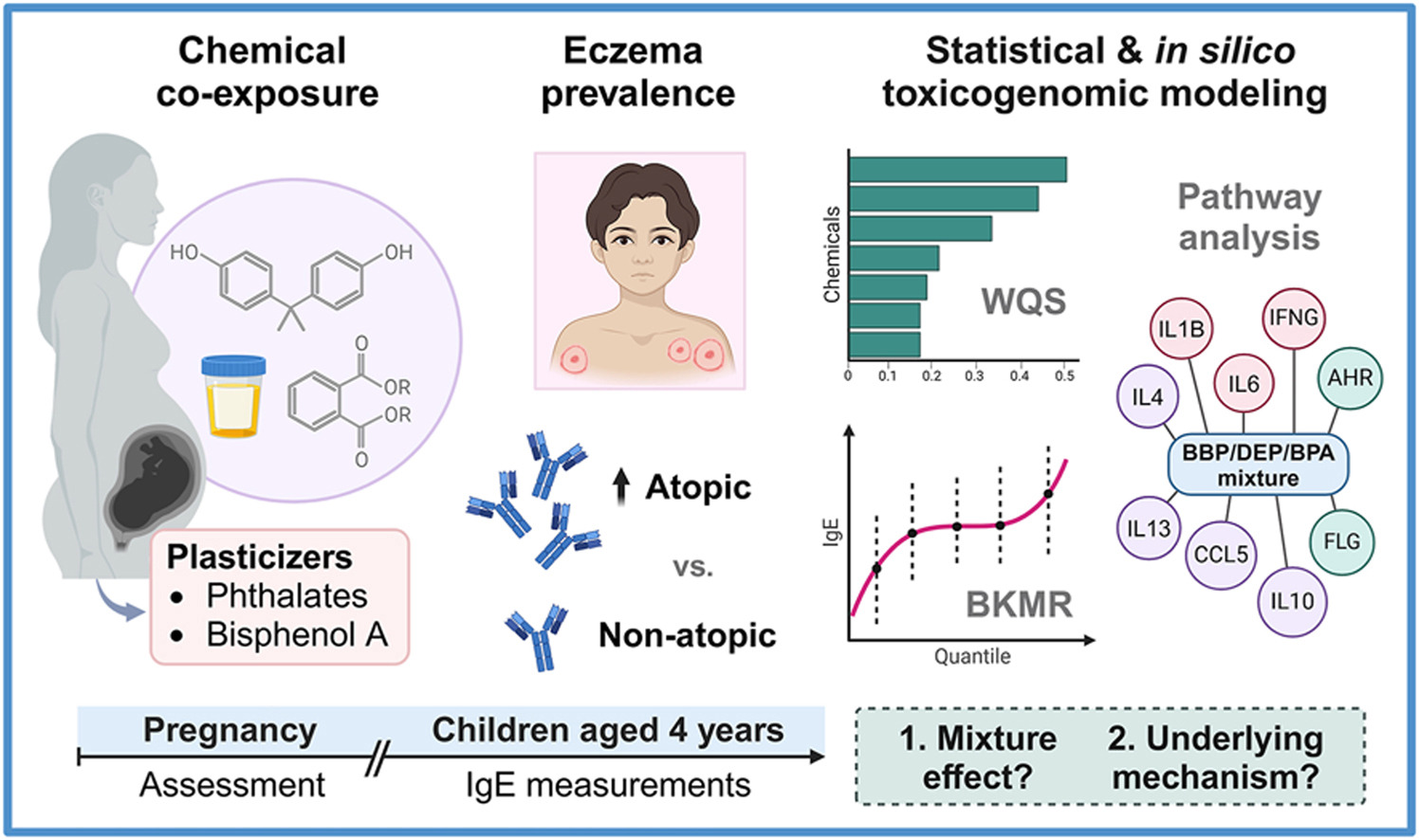Hidden health risks of endocrine disruptors?
New EU project sheds light on the interplay between endocrine disrupting chemicals and human health
Endocrine disruptors are chemical substances that may mimic endogenous hormones and thereby interfere with the endocrine system. The EU-funded research project ENDOMIX started January 1st and aims to comprehensively unravel how exposure to everyday chemicals with endocrine disrupting properties affect human health. The researchers will also elaborate recommendations to reduce exposure to these chemicals and minimize thereby health risks.
We are exposed to a multitude of chemicals every day, including those with endocrine disruption effects. Potentially harmful chemicals can enter into our body by eating or drinking, can be absorbed through the skin, or inhaled as tiny particles. “Endocrine disruptors are indeed omnipresent – we can hardly escape them”, says Prof Ana Zenclussen, Immunologist and Head of the Department of Environmental Immunology at the Helmholtz Centre for Environmental Research (UFZ) in Leipzig, Germany. “Even if the doses of chemicals to which we are in contact to are low, the exposure occurs over a long period of time, and this can have serious effects on our health”. Chemicals with the potential of disrupting endocrine processes in our body, may intensify, inhibit or just modify hormonal pathways. What are the consequences for our health? What diseases can these chemicals cause or accelerate? And where and how exactly do endocrine disruptors act in the body – especially as a mixture?
“With ENDOMIX, we are committed to find answers to these important questions”, says Zenclussen, who coordinates the consortium of 11 partner institutions from seven countries. “Our research project is based on several European cohort population studies, including the LiNA mother–child study established at the UFZ. This provides us with a wealth of data”. Because the biosamples of the participants have already been chemically analysed, the research team knows which endocrine disruptors each person was exposed to at what time point in life. In a first step, the scientists will dissect which mixtures of endocrine disruptors – found in the biosamples of the study participants – are associated with health-relevant effects. To do this, they use computer-based modelling methods and high-throughput cell culture experiments. “We will then generate the most promising mixtures in our laboratories and use them for further investigations in order to better understand the starting points, molecular relationships, and metabolic pathways involved in their effects”, explains Zenclussen. Various carefully selected in vitro, in vivo and in silico methods as well as modern OMICS technologies will be used.
One of the key questions of ENDOMIX is how mixtures of endocrine disruptors affect the immune system. “Immune cells play a central role in the development of many chronic diseases such as asthma, allergies, reproductive disorders, and metabolic diseases. It is therefore important that we gain a better understanding of the interactions between endocrine disruptors and the immune system”, says Zenclussen. With the help of Artificial Intelligence (AI), among other tools, the research team will investigate whether the data and results obtained from the experimental settings are indeed the underlying causes for the existing diseases of the study participants. “With ENDOMIX, we want to uncover the real life effects of endocrine disruptors on human health and identify possible differences between age and sex”, says Zenclussen. “Our project is unique in that we are scrutinising exposure to endocrine disruptors and the associated health effects over the entire lifespan”. An overarching aim is to identify the critical time windows in which the body reacts particularly sensitively to endocrine disruptors. “If these time windows are better defined and known, protective measures can be particularly effective, and health risks can be minimised”, says Zenclussen. “We are working hard to ensure that our research findings can lead to practical recommendations for action – so that people can better protect themselves from everyday chemicals with hormonal effects”.
ENDOMIX runs until the end of 2027 and is funded by the European Union’s Horizon Europe research and innovation programme under grant agreement No 101136566 with around EUR 7 million. Coordinated at the Helmholtz Centre for Environmental Research (UFZ). Project partners are: Institut national de la santé et de la recherche médical (INSERM, France), Fundación Privada Instituto de Salud Global Barcelona (ISGlobal/Spain), Fundación para el Fomento de la Investigación Sanitaria y Biomedica de la Comunitat Valencia (FISABIO/Spain), Imperial College of Science Technology and Medicine (ICL, United Kingdom), Universiteit Utrecht (UU, Netherlands), Erasmus Universitair Medisch Centrum Rotterdam (EMC, Netherlands), Federal Institute for Risk Assessment (BfR), Masarykova univerzita (MU, Czech Republic), Fraunhofer Institute for Biomedical Engineering (IBMT), European Institute for Biomedical Imaging Resesarch (Austria).



